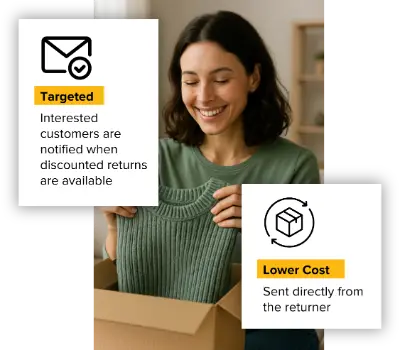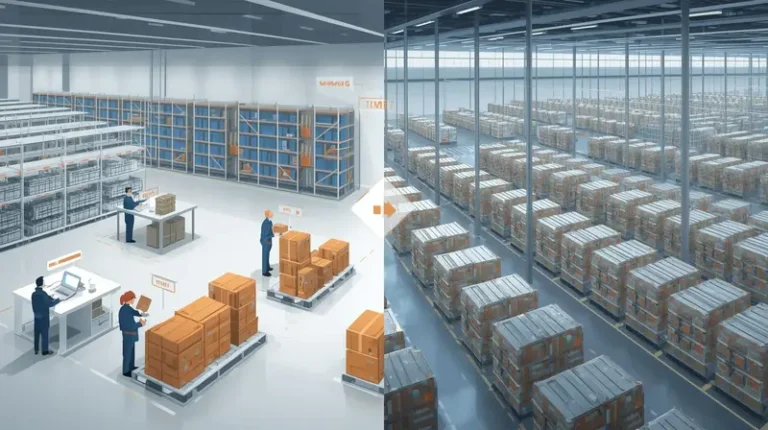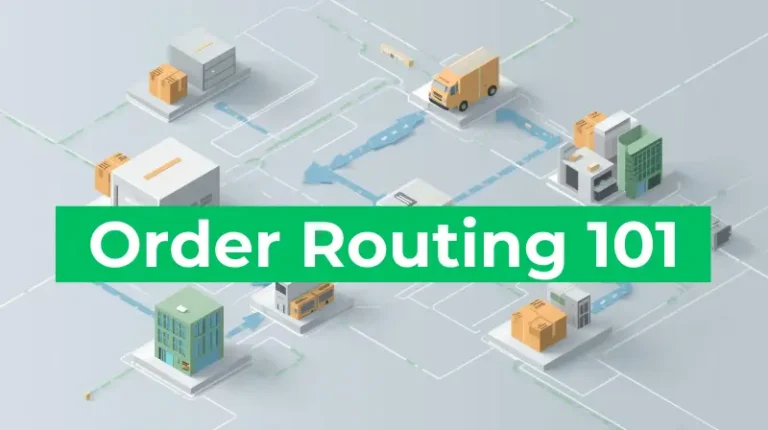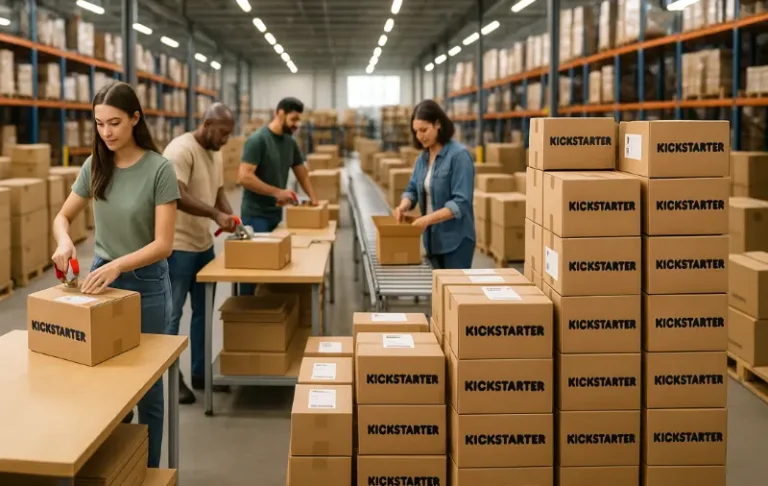The Importance of Logistics in Ecommerce Fulfillment

Last updated on April 14, 2023
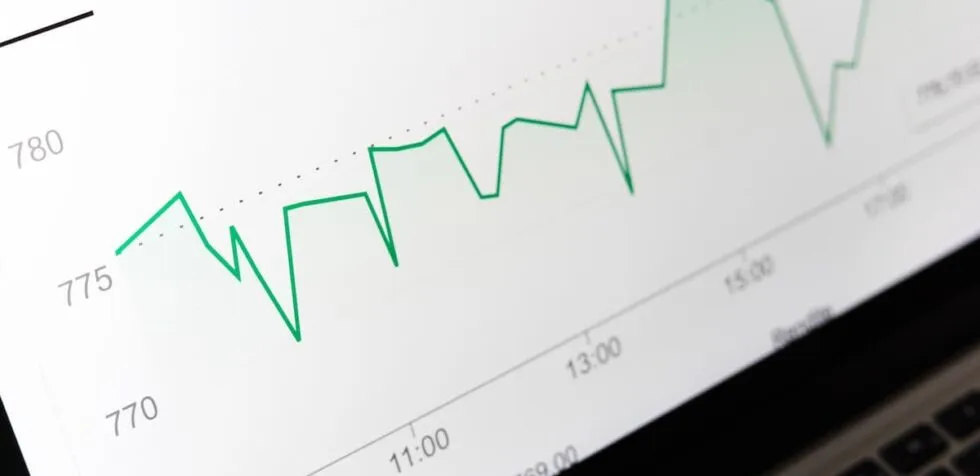
In this article
 32 minutes
32 minutes
Listen to podcast here.
Podcast: Fast Ecommerce Shipping How to Offer It to Grow Your Brand – What’s Working in Ecommerce (Ep. 45)
The host of a podcast on e-commerce marketing and owner of Caravan Digital, Eagan Heath, interviewed Manish Chowdhary, an expert in logistics and ecommerce order fulfillment and the CEO of Cahoot, a full-service order fulfillment services network. They discussed the importance of warehouse logistics in the e-commerce sector, which can affect profitability and the fulfillment strategy of ecommerce brands and retailers. Chowdhary explained the complexity of order logistics with inventory supply chain issues, international shipping, inventory storage, and warehousing strategy. Cahoot offers flexible and affordable order fulfillment services for B2B, wholesale, direct-to-consumer, and Amazon’s Seller Fulfilled Prime (SFP) program. They also have the capacity to offer one-day and two-day nationwide free delivery, which is essential for e-commerce brands to remain competitive. Ecommerce brands that fail to offer fast and free shipping are at a strategic disadvantage, as consumers are accustomed to these order fulfillment services, which are associated with customer satisfaction and increased revenue.
Eagan Heath:
Welcome everyone to another episode of What’s Working in E-Commerce. I’m your host, Eagan Heath, the owner of Caravan Digital. We’re a direct to consumer e-commerce marketing agency. We help with paid search, paid social, and email automation. Today I’m very fortunate because I’m speaking with an expert in logistics and fulfillment. His name is Manish Chowdhary he is from Cahoot. Manish, welcome.
Manish Chowdhary:
Well, thank you for having, Eagan. Really excited to be here.
Eagan Heath:
Yeah. Tell us a little bit about why e-commerce merchants might want to use a third party logistics (3PL) company or a solution like that.
Manish Chowdhary:
So Eagan, if you look at what’s happening with e-commerce and logistics, I’d like to start out by saying that shipping and order fulfillment is such a crucial part of being successful online, that it is something that every merchant already knows. All your audience probably is already aware. So I’ve even coined a phrase called half your shopping experience is your shipping experience. So it is that important. And when it comes to e-commerce shipping, it can make or break once profitability. It is that crucial because if the merchants are not looking at that in a critical fashion, then they’re actually not taking a complete view of their business.
Slash Your Fulfillment Costs by Up to 30%
Cut shipping expenses by 30% and boost profit with Cahoot's AI-optimized fulfillment services and modern tech —no overheads and no humans required!
I'm Interested in Saving Time and MoneyManish Chowdhary:
And e-commerce and logistics has become a very, very complex topic with inventory supply chain issues. Getting goods from overseas, if you have manufacturers outside, the cost of moving those containers by ocean freight, getting them to the ports in the US which are choked. And then storing and housing the inventory. And then finally, your warehousing strategy because you can’t bring an inventory fast enough, and so on. So I can keep going, but I’m going to turn it back to you so you can break it down for the audience.
Eagan Heath:
Yeah, that’s great. Hearing you talk about that, it strikes me that it’s every bit as complicated as the digital marketing and probably much more. So my hat’s off to you.
Manish Chowdhary:
Well, thank you, Eagan. In fact, when merchants are not taking… I’ll give you a very simple example just to set the stage is, all the carriers implement what we call peak season surcharge, and peak season delivery surcharge. This is in addition to the fuel surcharge. And this can range anywhere from 50 cents all the way to two, $3 per package. So if you’re coming from a marketing perspective and in Q4, you’re not accounting for that $2 extra order fulfillment or the shipping surcharge, all your auto AS, all your return on advertising spend, how much money you should allocate, all of that math goes out the door. So logistics is like an iceberg. You only see one 10th of it outside and the remaining is quite deep.
Eagan Heath:
Yeah, that’s amazing. And like you said, this is really affecting your margins, which can affect whether your advertising or your marketing is profitable. And so, that’s why we’re speaking about this today. Tell us a little bit about Cahoot, of what you guys do, and just how you got into this.
Manish Chowdhary:
In the interest of time, I’ll keep it short in terms of Cahoot is a full service order fulfillment services network. So we essentially help ecommerce brands and retailers execute the most merchant centric fulfillment strategy. Which means both B2B, wholesale, direct to consumer, fulfillment for all channels from Amazon, Shopify, and also supporting their programs such as Seller Fulfilled Prime (SFP), which is a two-day nationwide free delivery, including one day delivery for 20% of the time. So Cahoot is a cutting edge, modern, what we call peer-to-peer order fulfillment services network. And I can explain that a little bit later. But essentially, we help… Think of Cahoot a bit like FBA, but a lot more flexible and a lot more affordable.
Eagan Heath:
Interesting. So I’m looking at your website here. It’s cahoot.ai, correct?
Manish Chowdhary:
That’s right.
Eagan Heath:
Yeah. I see. Why is Cahoot better than other 3PLs? You talked about lowest cost by design, scales to help you grow. And I was going to ask about this, the rigor to power the most demanding fulfillment. I said SFP is too tough for other 3PLs. And you just said what that is, that’s basically one or two-day shipping. Is that right?
Manish Chowdhary:
Yeah, SFP stands for Seller Fulfilled Prime. So is essentially Amazon’s program for certain sellers who have been pre-approved to get the prime badge and still fulfill the orders outside of FBA. So there’s a full webinar on our website if anybody’s interested in checking it out. It’s a very, very hard program to qualify and very hard to stay on top of. And Cahoot does that in addition to supporting whatever order fulfillment strategy makes the most sense for our merchants.
Eagan Heath:
That’s great. And for e-commerce brands that are listening, if they’re not doing one or two-day shipping like this now, make the case a little bit. Obviously, we’ve really gotten used to this with Amazon. How important is it to be able to fulfill it that quickly? And also what does a brand need to have in place to be able to do that?
Manish Chowdhary:
Well, I mean it’s really, really important. In fact, if you’re not offering one day, two-day free shipping on your website, you know are at a strategic disadvantage because consumers are looking for that. If you look at Amazon Prime, there are about over 200 million Amazon Prime members and they have gotten used to two-day delivery, used to be the norm, Eagan, a few years ago. I mean now Amazon is rapidly moving to one day delivery and many markets, the 10 markets where Amazon is doing same day delivery. So any brand that says that my customers are not demanding one day, two-day delivery, I will challenge you on that. And customers are not going to come and tell you, they’ll just go elsewhere.
Eagan Heath:
And in terms of is there a certain amount of inventory that sellers need to have or anything like that, how do they think about maybe the inventory and logistics side of it so that they can do this?
Manish Chowdhary:
In fact, I’ve got some visuals if you like. I can pull them up and we can go over how does Amazon-like Fulfillment work. So let’s see. All right, let’s go right into it. I mean, I want to share with the audience what you’re looking at on the screen is, there are the three top tech behemoths. You’ve got Amazon, which has about 34-35% of all e-commerce GMV in the US. Walmart is trailing behind. And then Shopify is another very popular e-commerce platform. And we are going to use Shopify as the DTC poster child or DTC representative. So Amazon, if you want to sell on Amazon, Amazon has its own fulfillment service, very popular Amazon FBA. Walmart has Walmart Fulfillment Services, which is rather new. And then Shopify originally tried to implement or launch Shopify fulfillment services network in 2019. That didn’t quite work out, wasn’t doing so well. So in April of this year, they acquired a company called Deliver, which actually competes with my company, Cahoot.
Manish Chowdhary:
But the challenge with this, Amazon of course, wants to use FBA. Walmart forces you to use WFS now. And Shopify introduced a new program called Shopify Promise, which is expected to compete with Amazon’s Amazon Prime. And the biggest challenge with these programs is they’re very self-serving. For example, Amazon has limited warehouse space, so they will limit how much inventory you can send to them. And they do that limitation by certain methods. The Q4 storage fees are three times the storage fees that Amazon would charge in the first three quarters. So by using such prohibitive high pricing, they’re trying to control the usage. And of course, FBA is great when you sell your products on Amazon and use FBA to fulfill it.
Manish Chowdhary:
However, the merchants want to sell on all different channels because shoppers are everywhere. You cannot contain yourself to selling on one channel. But if I take an order from Walmart, I’m actually prohibited by law or by rules of Walmart that I shouldn’t use FBA, because Walmart wants us to use Walmart Fulfillment Services. If I take an order on Shopify or eBay, then I’m going to pay considerably higher to Amazon for order fulfillment because Amazon, of course, wants everyone to sell on Amazon and that’s why they want to incentivize this. So what we see is siloed strategy.
Manish Chowdhary:
So when you think from a merchant’s perspective, it’s hard enough to run a business. And now if you have to send inventory to three different networks, and God prohibit, if you are selling on eBay and many other marketplaces, it becomes even more challenging. So our view is that these strategies, while they are very attractive in some cases, it tends to tie the merchant down, and it’s not the most affordable strategy from a bigger holistic standpoint. And you asked this question, Eagan, how does Amazon-like fulfillment work? How do you offer one day, two-day delivery nationwide? So I want to break this down for your audience. I can take a pause if you have a question, or I can keep going.
Eagan Heath:
No, this is great. Part of what I’m understanding is if you’re doing fulfillment by Amazon, and you’re selling on Walmart, and then you’re doing some other one, you’ve got basically your products in different fulfillment centers, and you’ve got to kind of manage that, versus this is an alternative to handle all three or more through one service. Is that right?
Manish Chowdhary:
That is exactly right. And we know, and perhaps you can attest to that, that merchants should be selling on as many channels as they possibly can because shoppers are not limited to one particular marketplace, even as popular as Amazon, it’s certainly not a hundred percent of the market. And therefore, there could be less competition on other places. So we encourage merchants to make the products visible at as many places as they can and also of course, focus on their direct to consumer website.
Eagan Heath:
Yeah, that’s excellent. All right. So what I see here on the screen of the different locations of if we have two, four, or nine locations, tell us a little bit about this.
Looking for a New 3PL? Start with this Free RFP Template
Cut weeks off your selection process. Avoid pitfalls. Get the only 3PL RFP checklist built for ecommerce brands, absolutely free.
Get My Free 3PL RFPManish Chowdhary:
Yeah, so this is a map for those of you who are watching the screen. It’s essentially breaks it down that how do you make free and fast shipping possible? How do you make Amazon-like shipping affordable? Of course, we cannot afford to ship using the expensive overnight air or two-day air service. So the most economical is the ground service like a UPS ground or USPS first class and so on. And what this illustrates is that if you want to target two-day delivery nationwide, you need to have at least four strategically located warehouse, or four strategic fulfillment locations. And if you look at the middle column, Eagan, you’ll see these are four strategic… This is where the bulk of the US population is, and these provide the best coverage. So think about New York, think about Southern California, think about Dallas, Texas, and upper Midwest such as Chicago area.
Manish Chowdhary:
And then if you have these four strategically located warehouses four to five, you can get 99% of the US population within two days. And if you want to target one day delivery, you need many, many more, like nine locations. And why do we know that is because Cahoot supports Seller Fulfilled Prime (SFP), which is two-day delivery nationwide. And with one day at least two 20% of the population at any given time, that’s the requirement for Seller Fulfilled Prime (SFP). And furthermore, so if you were to break it down, and if you wanted to do two-day delivery nationwide, like Amazon FBA, you need to start with smart inventory placement. We talked about that previously. You need four to five strategic locations if you want to target. But of course, the amount of inventory you’re going to place in Southern California is probably not the same as what you’re going to place in the Chicago area because the volume of orders is not going to be the same.
Manish Chowdhary:
And FBA does that for you, and Cahoot does that for you as well. So we will spread the inventory proportionately based on historical data and many other factors. Once the inventory is strategically placed, and it’s ,of course, not a one-time thing because you have to constantly, as inventory gets depleted, you need to replenish the inventory. And getting this right is a very, very complex topic. However, this is where the opportunity is. And then, once you have your inventory located strategically, then you need to market this. Especially if you have a website. The marketplaces like Amazon and Walmart, of course, do it for you. They’ll promote that free two-day shipping badge on the product page, on the category page, on the shopping cart. It’s called date certain shipping, buy by X time, and you’ll get it delivered by Y time. And that is really important because that is what gives the consumer the confidence that they will get the product.
Manish Chowdhary:
We cannot say things like two-day shipping and three-day shipping because that does not account for your handling time. It does not tell me if I place an order today, will the two days counter begin tomorrow? Will it begin today if it’s a weekend, if it’s a holiday. So this is really important in order if you’re doing your own DTC site to promote this. And then once you receive the order, you need to manage your cost. So you need to now route that order to the right location that has the cheapest cost, but also will deliver the order within the promised SLA to the consumer. And then we need to monitor to ensure that the customer indeed did receive the item as promised. And if there was any issues, you need to address that. So you cannot just forget about it after you ship the order. Because if you want to be like Amazon and you want to give the same level of experience, you need to be fanatical about tracking and making sure that the customers got what they were expecting. Any comments, Eagan, before I move on?
Eagan Heath:
Pretty interesting. Are you guys using ground shipping, and Amazon, and others or not?
Manish Chowdhary:
No. I mean, Amazon FBA also uses… Most of the time they use ground shipping, so does Cahoot. However, a little bit further down in my presentation, I will cover what FBA does and what they don’t do. For example, as I said earlier, if you wish to get a Shopify order Fulfilled By Amazon (FBA) is going to cost you more, because that order is originating from outside of Amazon. So Amazon and Cahoot would utilize very similar strategy. But most brands, as we know, they also want to sell wholesale. They want to store their inventory because given the current inventory supply chain issues, you cannot predict how long things will take. So a lot of brands and retailers are stocking up for the holidays earlier. But all of these, you cannot just take all of that and send that to FBA because there are chances that Amazon may not even accept all that inventory because there are limits on how much inventory you can send to Amazon.
Eagan Heath:
Gotcha. Okay.
Manish Chowdhary:
And those are similar problems with Walmart as well. For example, right now, you cannot use Walmart fulfillment service to fulfill an order from Shopify. So from a merchant’s perspective, it becomes a nightmare because now you need to monitor some inventory sitting in Walmart, some in FBA, you need to… Now each one has different receiving times. Amazon takes excruciatingly long many times to receive inventory, especially closer to the holidays. You need to monitor your safety stock to see how much inventory do you have, how many days of inventory. If you have too much inventory, then Amazon penalizes you because your IPI score, inventory performance index goes down. Then your limits on the account can suffer, then you cannot send your inventory back to Amazon. And then the problem just goes on. I can certainly drill down on anything specific that you’d like me to cover.
Scale Faster with the World’s First Peer-to-Peer Fulfillment Network
Tap into a nationwide network of high-performance partner warehouses — expand capacity, cut shipping costs, and reach customers 1–2 days faster.
Explore Fulfillment NetworkEagan Heath:
Yeah, this is great. We can keep going here, but thank you for talking about that.
Manish Chowdhary:
Cool. Cool. So our view, and this is not just my view and Cahoot’s view, but this makes sense because it’s simple physics. Because most sellers should be selling on multiple channels. And if you’re selling on multiple channels, you need a holistic order fulfillment strategy. Most sellers, if your ecommerce brand is successful, if your product is successful, you’re probably also doing some wholesale, you’re supplying to other stores, you’re selling one P to places like Nordstrom, and some of the other B2B channels. So you need a fulfillment provider that can do both B2B, B2C, all year long. And also help you deliver on one day, two-day delivery if that’s what you would like to target. So broadly speaking, there are three ways you can go about doing it. And we already covered that you need at least four warehouses, four to five strategically placed.
Manish Chowdhary:
So if you have a warehouse in Wisconsin, that’s not a great location. It might be a great warehouse for a great price. But of course, the reason why the price is great is because that’s not a strategic location that most sellers are targeting. So you can do it yourself if you have a warehouse of your own, or you can go and rent space, sign long-term leases because warehouse rent is an all-time high. So you’re unlikely to find great deals if you’re not willing to commit for a long time. Then you need to find labor, staff them, manage all of this at four or five locations on a daily basis. Carrier relationships, it can get very, very expensive and risky because you may not have the economies of scale, unless you’re doing eight, nine figures or at least seven figures in UPS spend. Your UPS rates may not be as good and so on.
Manish Chowdhary:
It’s sort of like the analogy I’d like to use is cloud. In today’s day and age, you standing up your own servers is going to be a very time-consuming process in addition to risky and expensive. But you can certainly do that and you still need software and technology. The other option is 3PLs, the traditional third party logistics or warehousing companies. Two thirds of them in the US are what we call mom and pop operators. They are the facilities that have one to three facilities nationwide. Most of them are one location. And then you have the large mega companies that target the large enterprise. And most of the time, they’re not a great fit for small businesses because they have monthly minimums, very large minimums. They want a lot of volume that you may or may not be able to commit. They want a very long-term relationship and contracts. And even then, so if you go with the 3PLs, you may have to assemble two, three, four of them, four different companies, negotiating separate agreements with them.
Manish Chowdhary:
Each one has their own service level agreement, meaning this is how long it takes to receive, this is when the orders will go out. And then furthermore, you’ll need technology on how to manage all of this. How will you route the order? Who should fulfill what? And how will you recover from exceptions? So it gets pretty challenging to manage all this, and especially if you’re trying to target one day, two-day delivery, it can get quite complex and quite expensive. And then there’s something new which is we call, order fulfillment services network. And technically, Amazon FBA would be considered a fulfillment services network. And then there are technologies and solutions like Cahoot that have… They are new age. At least Cahoot, unlike deliver supports both wholesale B2B, as well as B2C. And we can provide very cost-effective solutions to clients and run their holistic fulfillment strategy.
Manish Chowdhary:
And one thing, as I mentioned, because Cahoot supports Seller Fulfilled Prime (SFP), many of our facilities operate six days a week. Unlike traditional 3PLs that operate only Monday through Friday. We don’t have any peak surcharges and we have all the integrations. So getting started is very easy and stress-free. And for those of you who are listening, because Cahoot is what we call peer-to-peer order fulfillment services network, if you have a warehouse, you can certainly include your warehouse as part of the fulfillment node. And if you want to make money, if you have excess space in your warehouse and you would like to monetize that excess space and capacity, we invite you to come apply to become a fulfillment partner for Cahoot. So for the very first time, you have an opportunity to make money on the Cahoot network in addition to utilizing our services. I’ll take a pause here. Eagan, I’m sure you have questions for your audience.
Eagan Heath:
Yeah, that’s pretty interesting. I think this order fulfillment services network piece is curious to me where it sounds like you guys have some warehouses and things like that. But then in some cases you’re also tapping into, it could be merchants, and vendors, and things like that. Or it’s like they’ve got warehouse space and you’re utilizing that too. Am I understanding that right, where it’s kind of a mix?
Manish Chowdhary:
That’s right. I mean, Cahoot is a peer-to-peer order fulfillment services network. Which means this was the innovation that Cahoot brought to market. We have 10 issued patents that most of our supply, most of our warehouses belong to other top tier merchants that have excess capacity. And they get to monetize that for the first time. And the benefit for our clients is because it’s sort of… Think of Cahoot as an Airbnb. You’ve got your spare bedroom, you’ve got your spare apartment, a spare house. And because we are bringing that to market for the very first time, we are able to pass those savings onto our clients. And mind you, these are top tier merchants, terrifically well run facilities, the average tenure of warehouse and our network, they’ve been selling and fulfilling their own orders for over 10 years. And you can see from our rating, that five star rating on Amazon, five star rating on Shopify. So that is how Cahoot is able to offer affordable services compared to the competition.
Eagan Heath:
Very cool. Thank you. Anything else you want to share and present about here? Or anything else I should ask you about?
Manish Chowdhary:
No, I mean I think there is a new development that I’m not sure if you’ve been following that was announced by Amazon called Buy with Prime in April, just a couple of months ago. I don’t know if you’ve covered that you’re familiar with that you, if that would be of interest to your audience. So this is something that is relatively new.
Eagan Heath:
Yeah, I’ve been following this, Manish. Tell people a little bit about this and also just how this relates to what we’re talking about.
Manish Chowdhary:
Yeah, well, what this is really, Amazon announced in April of this year, what we call Buy with Prime program. It’s essentially enabling shoppers to buy with all the prime benefits, the Amazon Prime membership benefits. But on any website outside of Amazon. Until April, if you were an Amazon Prime member, you had to buy it on Amazon in order to get your two-day free delivery. But now, Amazon has launched this program that allows merchants to put the prime badge on their website and fulfill these orders through Amazon. So as a shopper, if you’re looking at the screen, you can see the Buy with Prime badge. Think of it like PayPal checkout if you’re familiar with that. It’s essentially, when you log in on, let’s say your website, you will log in using your Amazon credentials, your Amazon shopper credentials. And will pre-populate all your Amazon profile data, and the order will get shipped from Amazon within the two days.
Manish Chowdhary:
So you’ll get all the prime benefits. So let’s say if you have a Shopify big commerce, Magento commerce store, you can install this. However, it’s a loaded problem. While it may be attractive because it builds trust, but there are host of other issues that we don’t believe it’s the right solution for merchants. But it’s a call. It’s a call to action to anybody who’s selling online, that previously the shoppers expected two day, one day free shipping on Amazon. But this program is going to accelerate that need to offer that same free and fast shipping on every channel. So if you’re not doing free and fast shipping, and by that I mean at least free two-day shipping nationwide, you are going to be in a strategic disadvantage because let’s say if your competition starts offering it and you don’t, then you are at a loss. And this is a new development that I feel and we know that this is going to create waves this holiday season and certainly into 2023.
Eagan Heath:
Yeah, pretty interesting. We’ve covered on our show just the important of owned growth, and obviously, we do Klaviyo email marketing with clients, and this whole piece of you want to own your customer. And now as you’re saying, if Amazon owns this customer, that’s tricky. This could increase your conversion rate, this could increase your sales. Maybe there’s a poll if you’re using Amazon FBA. But you have to weigh the pros and cons of do we get the customer data or not? That’s really something to weigh out, but I hear what you’re saying of one in two-day shipping, coming through your Shopify site or what have you, people are going to be be expecting that. So that’s something to think about.
Manish Chowdhary:
That’s exactly right. It is a by invitation only program, so it’s not open to every merchant right now. But suffice to say that it is coming, and merchants should be planning and preparing for this in advance because this… I’m sure, Eagan, you can talk about the early days of Google AdWords. That’s the time to get on, take advantage, get positioned to beat the competition and before everything becomes widely prevalent and available.
Eagan Heath:
Yeah, that’s great. Well this is great info, Manish. Anything else we should cover before we wrap it up here?
Manish Chowdhary:
No, I mean I think most of it is just the last point here, is Buy with Prime is like a Trojan horse, because I’ll give you a very simple example. Let’s say install this button on your website. Then somebody puts a… We know that all the DTC websites, most merchants like to increase their basket size by offering free shipping on let’s say, orders over $50, or $70, or what have you. But with Amazon Prime, there is no such minimum. One can order paper paperclips and a box of paperclip, and you could get that for free. So that can also be quite challenging. And if you don’t get the customer detail, customer information, if Amazon holds that information to them, then it may not be a good idea. And finally, just using the same analogy, let’s say I go to your website and you’ve put Amazon Buy with Prime. And I put the item in the shopping cart. And I abandon that shopping cart, it’s going to be hard to re-target that customer.
Manish Chowdhary:
And we know that Prime shoppers visit Amazon at least once a week. 50%, 45% of the Prime Shop are buy from Amazon once a week. So if they abandon the item on your shopping cart, you can bet that Amazon will target competitive products and they reach Amazon. So you might actually lose that customer what you thought to be a great thing. But this program is still very new. I’d encourage sellers to keep an eye out, but the call for offering free one day, two-day shipping on your website on every channel you sell is here. Sellers should not procrastinate. If you think that your shoppers, your customers are not demanding that, I will challenge you on that again. I think because the customer behavior is quite consistent and we see the impact of that for those that offer. And I have a case study if you want me to cover that briefly with one of our clients, but I’ll let you make that call.
Eagan Heath:
Sure, yeah. I want to ask real quick, did you have a slide about the Shop Pay as well?
Manish Chowdhary:
Oh yeah. So we have a slide on Shop Pay, which is-
Eagan Heath:
Which is Shop Promise. Okay.
Manish Chowdhary:
… Shop Promise. This is again, Shopify’s answer to Amazon’s Buy with Prime. It’s still very new. You can only sign up to join the wait list. It is essentially, very similar that if you’ve shopped on the Shopify store from any one of the Shopify stores once, you will be able to check out quickly. And Shopify will handle the payment. And then there is some protection against returns similar to Amazon Prime or the FBA. So it’s still very new. But of course, Shopify’s trying. But the biggest difference between Shopify and Amazon is Amazon, you get traffic. In Shopify, you have to build your own traffic, you have to market your own. So that’s one of the key differences.
Eagan Heath:
Yeah, that makes sense. And that’s what we’re doing as an agency. So we certainly understand that base. You mentioned a case study, can you talk to us a little bit about what does the before and after look like for a client who goes this route with their fulfillment?
Manish Chowdhary:
Yeah, so we have a case study on our website, I’m going to pull that up, which is Cali’s Books. They’re a leading Amazon brand that… They’re leading DTC brand. And I’m going to go ahead and share that screen so one can see it. And so, they had a very similar problem. They were using a bunch of different providers. I mean they still do. So this is Cali’s Books. They have these very clever books that one can record is these are musical or rather recorded books that you can record your own words so they are books. But let’s say a grandparent is reading the story to the kid and it’s very popular, so it’s in their own voices. They’re doing really well. They’ve been growing like gangbusters. They sell on all popular channels. They sell on Amazon, they sell on Walmart, they have their own Shopify store.
Manish Chowdhary:
They also provide whole… They sell wholesale to Nordstrom and many other retailers around the country. So previously, they were using Amazon FBA and Seller Fulfilled Prime (SFP), then they got hit by inventory limits. They could not send the inventory to Amazon, and their bestseller would go out of stock that would lead to a lot of lost sales. And then they had a 3PL on the West Coast that was sending items to FBA. But they could not handle B2C or direct to consumer orders for Shopify. So they were using Deliver. And then when they decided that hey, they needed to have a backup to FBA Deliver, cannot do Seller Fulfilled Prime (SFP). So that wasn’t a good solution. And Deliver is not good at B2B. So there are many other challenges that they were dealing with and that was really hurting their growth. And Cahoot brought all of that under one roof and the results were outstanding.
Manish Chowdhary:
I mean, we helped them with DTC, which means all direct to consumer channels. We helped them with their Seller Fulfilled Prime (SFP), which is fulfilling Amazon orders. Cahoot also helps them sending inventory to FBA periodically. Then B2B. And we talked about strategic inventory placement. And the impact is Cali’s Books is growing 90% year over year, with near zero defect. And that’s something. And there’s a video of the Cali’s Books’ COO, Michael, on our website if somebody wants to check it out. So for those of brands that are looking for a holistic provider, and Cahoot always works in the best interest of the merchant and the best interest of the seller. So we don’t try to put a square peg in a round hole. But I’d encourage folks to check it out. It could be a game changer for some.
Eagan Heath:
That’s great. Yeah, I think the last question for me, Manish, is just how big does a company need to be for this to make sense? Is it a revenue number, is it a number of orders?
Manish Chowdhary:
Yeah, so Cahoot is a network similar to Amazon FBA. So it’s very flexible, it’s highly scalable. So you don’t need to be a huge brand. As long as you’re doing at least a hundred orders per month direct to consumer, that’s when Cahoot will begin to make sense. I think that’s probably when the business begins to… When you can’t do this out of your garage. So Cahoot is quite flexible. So if you have that need, come check us out, learn about it. Even if we are not the right fit immediately, because these fulfillment and logistics decisions can take weeks, and months, and sometimes years to decide. But it is certainly a very unique, and innovative, and affordable option.
Eagan Heath:
All right. That’s all right. And yeah, again, the website is cahoot.ai. Manish, thank you for coming on and sharing What’s working in e-commerce fulfillment.
Manish Chowdhary:
Eagan, thank you again for having me. And all of the ones who are listening, thank you for listening to me. And thank you for the opportunity. I’m really excited that I had a chance to talk to your audience.
Turn Returns Into New Revenue
